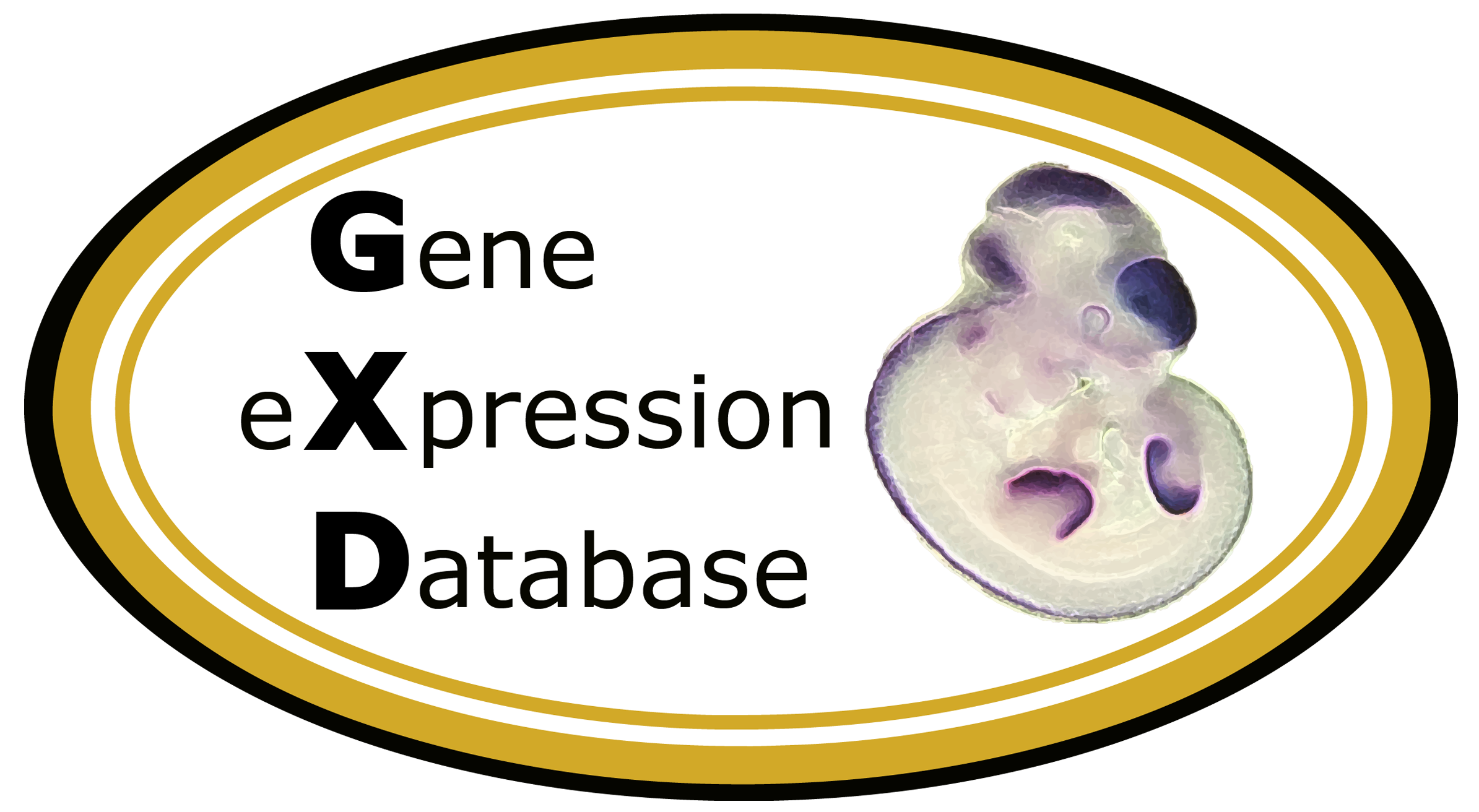Gene Expression Data
Assay Details
|
Assay
|
|
Reference:
|
J:290828
Holland PW, et al., Spatially restricted patterns of expression of the homeobox-containing gene Hox 2.1. during mouse embryogenesis. Development. 1988 Jan;102(1):159-74
|
|
Assay type:
|
RNA in situ
|
|
MGI Accession ID:
|
MGI:6448968
|
|
Gene symbol:
|
Hoxb5
|
|
Gene name:
|
homeobox B5
|
|
Probe:
|
probe 2
|
|
Probe preparation:
|
Antisense labelled with radioactivity RNA
|
|
Visualized with:
|
Autoradiography
|
|
|
Results
|
Specimen
1A/B:
embryonic day 8.5
(more  )
Note: 3-4 somites )
Note: 3-4 somites
Specimen
1A/B:
(close  ) )
|
Genetic Background:
|
Not Specified
|
|
Age:
|
embryonic day 8.5
|
|
Sex:
|
Not Specified
|
|
Type:
|
section
|
|
Note:
|
3-4 somites
|
Specimen
1D/E:
embryonic day 8.5
(more  ) )
Specimen
1D/E:
(close  ) )
|
Genetic Background:
|
Not Specified
|
|
Age:
|
embryonic day 8.5
|
|
Sex:
|
Not Specified
|
|
Type:
|
section
|
Specimen
4A/B:
embryonic day 12.5
(more  ) )
Specimen
4A/B:
(close  ) )
|
Genetic Background:
|
Not Specified
|
|
Age:
|
embryonic day 12.5
|
|
Sex:
|
Not Specified
|
|
Type:
|
section
|
| Structure |
Level |
Pattern |
Image |
Note |
| TS20: spinal cord |
Present |
Regionally restricted |
4A/B
|
Expressed predominantly in the dorsolateral regions.
|
Specimen
4C/D:
embryonic day 12.5
(more  ) )
Specimen
4C/D:
(close  ) )
|
Genetic Background:
|
Not Specified
|
|
Age:
|
embryonic day 12.5
|
|
Sex:
|
Not Specified
|
|
Type:
|
section
|
| Structure |
Level |
Pattern |
Image |
Note |
| TS20: spinal cord |
Present |
Regionally restricted |
4C/D
|
Expressed predominantly in the dorsolateral regions.
|
Specimen
5A:
embryonic day 13.5
(more  ) )
Specimen
5A:
(close  ) )
|
Genetic Background:
|
Not Specified
|
|
Age:
|
embryonic day 13.5
|
|
Sex:
|
Not Specified
|
|
Type:
|
section
|
Specimen
5C:
embryonic day 15.5
(more  ) )
Specimen
5C:
(close  ) )
|
Genetic Background:
|
Not Specified
|
|
Age:
|
embryonic day 15.5
|
|
Sex:
|
Not Specified
|
|
Type:
|
section
|
Specimen
7A/B:
embryonic day 12.5
(more  ) )
Specimen
7A/B:
(close  ) )
|
Genetic Background:
|
Not Specified
|
|
Age:
|
embryonic day 12.5
|
|
Sex:
|
Not Specified
|
|
Type:
|
section
|
| Structure |
Level |
Pattern |
Image |
Note |
| TS20: lung mesenchyme |
Strong |
Regionally restricted |
7A/B
|
Expressed in the mesodermal layer, with strongest expression around the tips of the growing buds.
|
Specimen
not shown:
embryonic day 6.5
(more  ) )
Specimen
not shown:
(close  ) )
|
Genetic Background:
|
Not Specified
|
|
Age:
|
embryonic day 6.5
|
|
Sex:
|
Not Specified
|
|
Type:
|
section
|
Specimen
not shown:
embryonic day 7.0
(more  ) )
Specimen
not shown:
(close  ) )
|
Genetic Background:
|
Not Specified
|
|
Age:
|
embryonic day 7.0
|
|
Sex:
|
Not Specified
|
|
Type:
|
section
|
Specimen
not shown:
embryonic day 7.5
(more  ) )
Specimen
not shown:
(close  ) )
|
Genetic Background:
|
Not Specified
|
|
Age:
|
embryonic day 7.5
|
|
Sex:
|
Not Specified
|
|
Type:
|
section
|
Specimen
not shown:
embryonic day 14.5
(more  ) )
Specimen
not shown:
(close  ) )
|
Genetic Background:
|
Not Specified
|
|
Age:
|
embryonic day 14.5
|
|
Sex:
|
Not Specified
|
|
Type:
|
section
|
| Structure |
Level |
Pattern |
Image |
Note |
| TS22: hindbrain |
Present |
Regionally restricted |
|
Expressed in the posterior.
|
| TS22: spinal cord |
Present |
Regionally restricted |
|
Expressed in the anterior.
|
Specimen
not shown:
postnatal newborn
(more  ) )
Specimen
not shown:
(close  ) )
|
Genetic Background:
|
Not Specified
|
|
Age:
|
postnatal newborn
|
|
Sex:
|
Not Specified
|
|
Type:
|
section
|
| Structure |
Level |
Pattern |
Image |
Note |
| TS27: hindbrain |
Weak |
Regionally restricted |
|
Expressed in the posterior.
|
| TS27: spinal cord |
Weak |
Regionally restricted |
|
Expressed in the anterior.
|
|
 Analysis Tools
Analysis Tools



 )
)
 )
)
